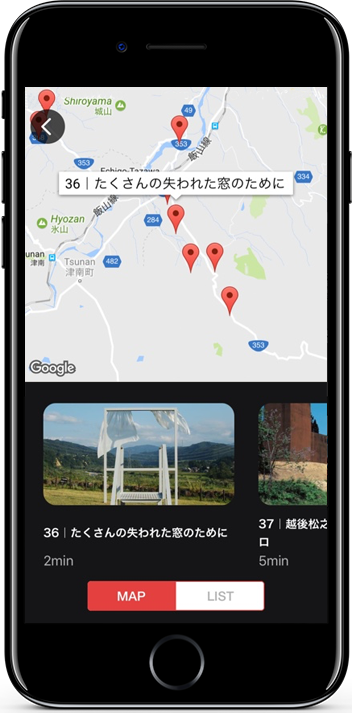
2017年9月5日より、カフェカンパニーが手掛けるWIRED HOTELと、ON THE TRIPが連携した「新浅草ガイド」をリリースしました。(English follows)
浅草に訪れる日本人はもちろん、海外からの観光客も増えています。そんな中で、よりディープな浅草を紹介したい。浅草寺や仲見世などの表の浅草ではない、裏の浅草。伝統と融合しながら新たなスタイルで挑んでいる若きクリエイターたちの、いまの浅草の物語をガイドにしました。
初の試み。
ホテルとの連携


このガイドをナビゲートしてくれるのは、2017年4月にオープンしたホテル「WIRED HOTEL ASAKUSA」。「LOCAL COMMUNITY HOTEL」をテーマに、さまざまな現地ツアーも企画。客室は、1つの建物の中に気軽なホステルから贅沢なペントハウスまで様々なタイプの客室が 1 つの建物の中にラインアップされています。
ON THE TRIPでは、リアルなスペースとの連携を進めており、日本各地のホテルとも連携したいと考えています。なおWIRED HOTELを皮切りに、WIRED CAFEでも順次展開していく予定です。
ここからは、「新浅草」ガイドのコンセプトを紹介します。ぜひアプリで、実際に使ってください。
ガイドで紹介している写真は、カメラマンの本間寛によるもの。写真もぜひ楽しんでください。
※このガイドの音声は、WIRED HOTELのアンバサダーであり、浅草に住んでいたAutumn Smithが日英を吹き込んでいます。日本人にとってはまるでその場で外国人に案内されているような、雰囲気をつくりました。ぎこちない感じも含めて、お楽しみください。


古きも新しきも。
混ざり合う「新浅草」
いま、新しい浅草が生まれ始めている。
伝統を受け継ぐ職人はもちろん、浅草の魅力に惹かれた外国人アーティストや、日本各地のクリエイターが。さらにはアントレプレナーが続々と集まり、浅草の文化を見直し、
アップデートしている。「新浅草」が生まれ始めているのだ。
たとえば、吉原の遊郭の文化を現代風にアレンジしたイラストで土産物を仕掛ける「新吉原/岡野弥生商店」。衰退しかけた飴細工文化を甦らせた「浅草 飴細工アメシン」。銭湯を新しい集いの場に変換させた「日の出湯」。
本来、浅草は、江戸以降から昭和初期にかけて、日本有数の繁華街のひとつ。様々な文化はここから生まれていたのだ。江戸時代には芝居小屋や吉原遊郭から多くの流行文化が生まれ、エンターテイメントのメッカとして有名に。
また、皮革職人をはじめ提灯やすだれなどの伝統工芸も盛んで、浅草寺の裏側あたりには多くの職人が集う、賑わいの多い街となった。
長い間賑わっていた浅草も、昭和初期以降に関東大震災、東京大空襲と、立て続けに壊滅的な被害を受けた。しかし、逆境に屈しない江戸っ子たちはたくましかった。衰退から立ち直り、また移住者たちの力を借りながら、海外の旅人にも大人気の下町情緒を残す町として変わらぬ賑わいを見せている。その賑わいに一躍買っているのが、「新浅草」であると思う。
かつての伝統文化と外からの新しい文化が混ざりあった、新しい浅草。もちろん、浅草寺や雷門、仲見世通りが有名だが、浅草の面白さはそこだけではない。
ここで紹介するのは、メインストリームではないバックストリート。王道では物足りないあなたにお届けする、今の浅草の物語。わたしたちは「新浅草」をつくっているお店の当事者にインタビューをして、その魅力を紹介しようと思う。それぞれのお店の現在進行形の物語、オーナーの魅力を存分に楽しんでほしい。
ON THE TRIP. ぼくたちの旅は続く。
Collaboration with WIRED HOTEL
A guide into the deepest parts of the “New Asakusa”
On September 5th, 2017 we will be releasing the “New Asakusa Guide,” a collaboration between ON THE TRIP and Cafe Company’s newest endeavor WIRED HOTEL Asakusa.
In recent years, both foreign and Japanese tourists alike have continued to increase in the Asakusa area. Through this guide, we aim to introduce the deeper parts of Asakusa. We won’t be introducing the well-known places like Sensoji and Nakamise, but rather introducing what lays behind these places. Through this guide we will introduce the story of young creators living and working in Asakusa who are making a new incarnation through combining the new with the old.
A new challenge. Our first collaboration with a Hotel.
The navigators for this guide are the newly opened hotel WIRED HOTEL which opened in April 2017. With the theme of LOCAL COMMUNITY HOTEL, they aim to create tours that highlights the local area surrounding it. In terms of the rooms themselves, WIRED HOTEL offers everything from dormitory rooms to a luxury penthouse suite.
Here at ON THE TRIP, we hope to continue to connect with real spaces and work with more hotels around Japan in the future. Through our connection with WIRED HOTEL, we will also be partnering with WIRED CAFE .
Below, you will find the concept text for the “New Asakusa Guide.” The photos for this guide were taken by Hiroshi Honma. We hope that you will also download the actual guide and use it to explore Asakusa as well.
※The Japanese and English audio for this guide were recorded by WIRED HOTEL Ambassador and former Asakusa resident, Autumn Smith. We wanted to provide a friendly atmosphere through a foreigner’s point of view. We hope that you enjoy our guide,
Asakusa through the looking glass.
A cultural hub during the Edo to Showa periods, Asakusa was once the center of the Tokyo entertainment culture and people hailing from all over Japan came to buy the finest crafts, visit the Yoshiwara red-light district, or pray to the gods of the iconic Sensoji Temple. The most skilled craftsmen in Japan gathered to create their wares within this cultural and artistic holy land. From internationally acclaimed ukiyoe artist Hokusai to legendary comedian turned film director “Beat” Takeshi Kitano, some of Japan’s most famous artists have found their inspiration in these streets.
However, Asakusa has also had its fair share of reincarnations. Originally a low-class residential neighborhood, Asakusa was especially susceptible to the fires that raged through Tokyo following the great Kanto earthquake in 1923 as well as the subsequent WWII firebombing. After the various blazes were extinguished and the center of activity in Tokyo shifted to the west side of town, Asakusa became an area for the older generation and the working artisan class. While Sensoji Temple and its nearby shopping arcade remained a popular destination for both Japanese and international tourists alike, most don't take the time to explore the deeper parts of the neighborhood that house local eateries and unique artisanal workshops. Despite this, Asakusa has and, we believe, always will rise again from the ashes.
Asakusa can only truly be experienced once you have ventured past the bright red temples and waves of incense. Once you have gone away from the rickshaw drivers calling out to the waves of tourists. Once you have walked into the backstreets of stores with their small signs and quiet, but powerful, resilience.
Hidden in deep corners of Asakusa are pockets of artists, creators, and entrepreneurs who are fighting to keep the tradition and legacy of Asakusa, it's art, and it's craftsmanship alive. In doing so, they are also working to preserve the spirit that has fostered Tokyo’s culture and art for generations. From handmade crafts to small hidden coffee shops, these stores are reinventing and keeping the traditions of Asakusa alive. Each in their own way, but each with a common purpose: to preserve, revive, and reinvent the image of Asakusa for both Japanese and non-Japanese alike. We, as representatives of this group, hope to show you a little bit of Asakusa for you to include in your experience of Tokyo.






